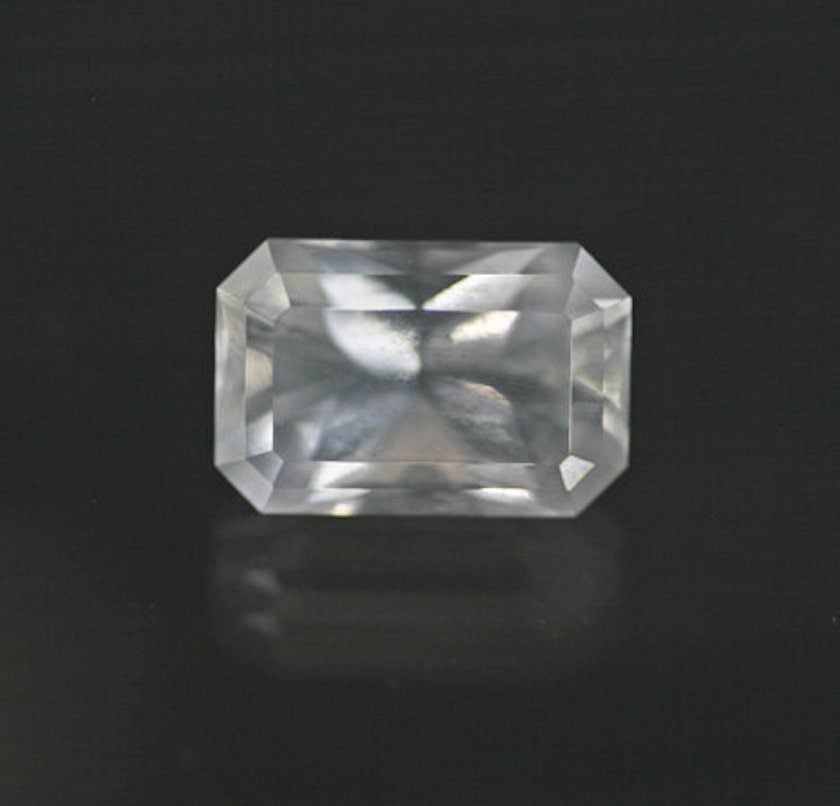Kurnakovite Value, Price, and Jewelry Information
Kurnakovite is difficult to cut, inadvisable to wear, and usually colorless. Consequently, faceted specimens are extremely rare.
1 Minute Read
Kurnakovite is difficult to cut, inadvisable to wear, and usually colorless. Consequently, faceted specimens are extremely rare.
Start an IGS Membership today
for full access to our price guide (updated monthly).Kurnakovite Value
Comments
Kurnakovite belongs to the inderite mineral group, which includes the species also known as inderite. Inderite has a monoclinic crystal structure, while kurnakovite is its triclinic dimorph. They share the same chemistry as well as general appearance and limitations as jewelry stones. Inderites are more likely than kurnakovites to be used as jewelry stones, but only because the material is somewhat more available.
Kurnakovites have a hardness of only 2.5-3. This means some specimens could be scratched by a coin, and they can all easily be scratched by household dust (with a hardness of 7). They also have perfect cleavage, which makes them liable to split if struck on their internal cleavage plane.
If those weren't enough reasons to dissuade faceters, kurnakovites are also soluble in warm acids. Thus, wearing these stones as jewelry would be inadvisable. On the other hand, faceted or cabbed specimens would make interesting collectible items for display.
Synthetics
Scientists have synthesized kurnakovites and inderites for research purposes. However, there's no known use or demand for this material as jewelry.
Treatments
No known treatments.
Sources
Boron, Kern County, California produces crystals to 24 inches across and large masses.
Other notable sources include the following:
- Argentina; China; Inder Lake, Kazakhstan; Turkey.
Stone Sizes
Kurnakovites occur in large sizes. The California material could yield stones of several hundred carats from large transparent masses or cleavages.
Care
Clean kurnakovites only with a soft brush, mild detergent, and warm water. Reserve these specimens for display. For more recommendations, consult our gemstone jewelry care guide.
Joel E. Arem, Ph.D., FGA
Dr. Joel E. Arem has more than 60 years of experience in the world of gems and minerals. After obtaining his Ph.D. in Mineralogy from Harvard University, he has published numerous books that are still among the most widely used references and guidebooks on crystals, gems and minerals in the world.
Co-founder and President of numerous organizations, Dr. Arem has enjoyed a lifelong career in mineralogy and gemology. He has been a Smithsonian scientist and Curator, a consultant to many well-known companies and institutions, and a prolific author and speaker. Although his main activities have been as a gem cutter and dealer, his focus has always been education. joelarem.com
International Gem Society
Related Articles
Black Diamond Value, Price, and Jewelry Information
Chameleon Diamond Value, Price, and Jewelry Information
Gray Diamond Value, Price, and Jewelry Information
Green Diamond Value, Price, and Jewelry Information
Latest Articles
800 Years of Mogok: A Celebration in Tenuous Times
What is the Average Gemstone Faceting Yield?
Pyroxmangite Value, Price, and Jewelry Information
How to Identify Emerald Simulants and Synthetics
Never Stop Learning
When you join the IGS community, you get trusted diamond & gemstone information when you need it.
Get Gemology Insights
Get started with the International Gem Society’s free guide to gemstone identification. Join our weekly newsletter & get a free copy of the Gem ID Checklist!
